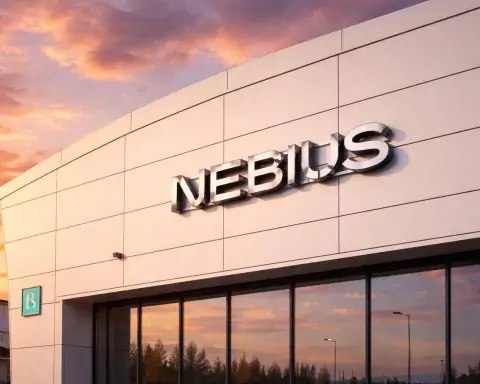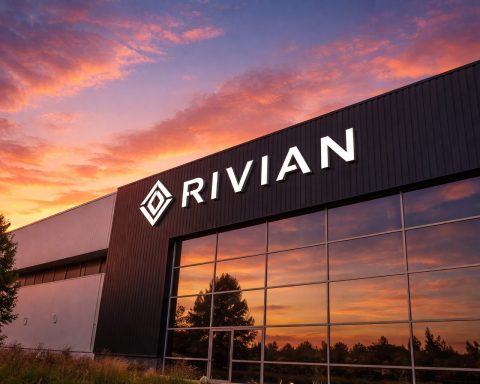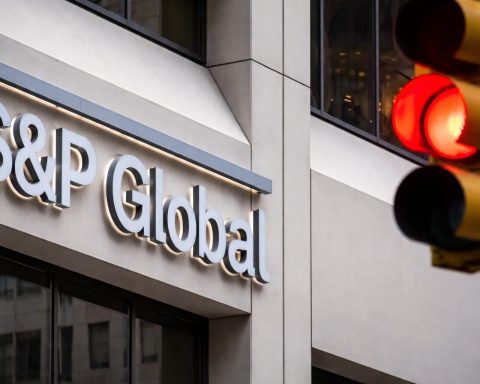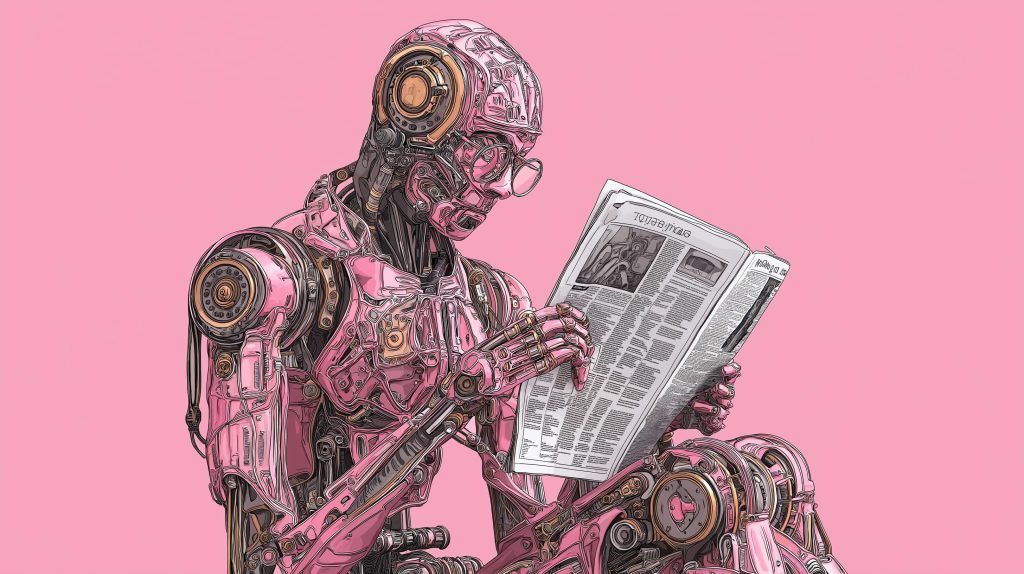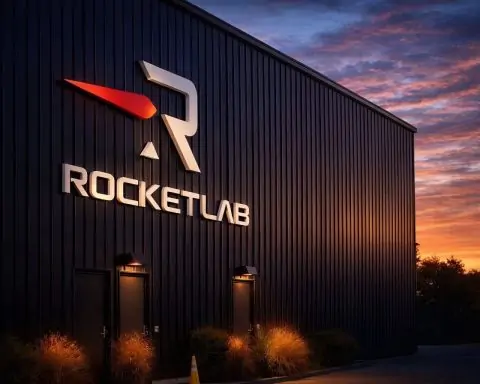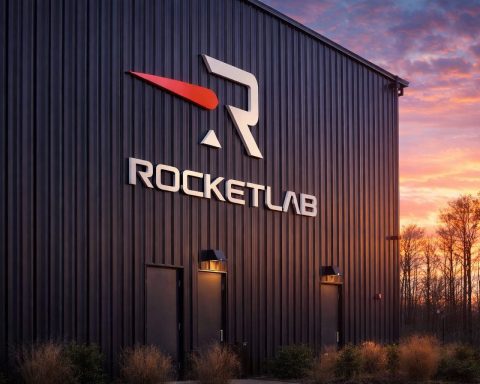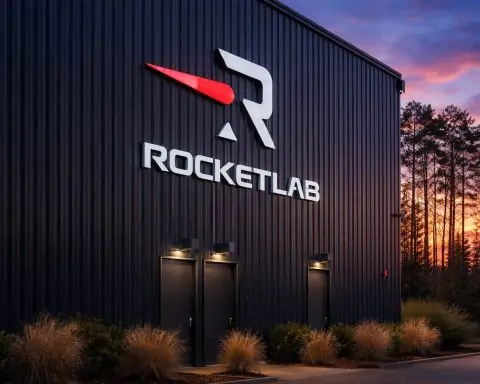Consumer Electronics: Pixel 10 Shines, Apple Feels the Heat
- Google’s Pixel 10 Phones Launch: Google unveiled its 10th-generation Pixel 10 smartphone lineup, highlighting a new Tensor G5 chip, upgraded cameras, and deeper AI-driven features. The Pixel 10, 10 Pro, 10 Pro XL (and a Pro Fold) sport refreshed designs but keep last year’s prices (starting at $799) to stay competitive [1]. Google’s hardware chief Rick Osterloh proclaimed, “We think this year we have a game-changing phone with game-changing technology,” underscoring confidence that Pixel 10 is a breakthrough device [2]. The Pixels introduce tricks like “Magic Cue” (which proactively surfaces info like flight details during calls) and “Camera Coach” to help users frame shots [3] [4]. Analysts say Google’s aggressive feature set and steady pricing raise the stakes for Apple’s iPhone 17 launch next month [5].
- Foxconn’s China Recall Jolts Apple’s Supply Chain:Apple’s manufacturing partner Foxconn abruptly recalled 300 Chinese engineers from its iPhone factories in India, reportedly at Beijing’s request, just weeks before the iPhone 17 debut [6]. It’s the second such pullback in recent months and comes amid Chinese government scrutiny of Foxconn’s India expansion. Foxconn has told Indian officials it had to send back all Chinese expat staff “with immediate effect,” causing concern about disruptions [7]. However, the company is mobilizing replacements from Taiwan and other countries to keep production on track. “Foxconn has been proactive to get engineers from countries like Taiwan and elsewhere to offset the impact that could come with such disruptions,” a source assured, predicting minimal impact on iPhone 17 schedules [8]. The move highlights geopolitical tensions creeping into tech manufacturing, as Apple works to diversify beyond China without angering Beijing.
Cybersecurity: Breaches, Patches and a Hacker Behind Bars
- HR Data Breach at Workday:Workday, a leading HR software firm, confirmed hackers breached a third-party customer database and stole contact data like names, emails and phone numbers [9]. The company stressed its core customer HR systems weren’t accessed, and there’s “no indication” sensitive payroll or employee files were taken. However, the stolen info could fuel targeted phishing and social engineering scams, Workday warned [10]. The breach – discovered August 6 – was part of a wider campaign hitting Salesforce-hosted databases at multiple companies. In recent weeks, data was also stolen from Salesforce-based systems of Google, Cisco, Qantas and others, apparently by the “ShinyHunters” hacker group using voice-phishing tactics [11]. Workday says it hired forensic experts and quietly posted a breach notice (inadvertently hidden from search engines) as it continues to investigate [12].
- Apple Rushes to Patch Active Zero-Day: Apple pushed out emergency iOS, iPadOS and macOS updates after discovering a zero-day flaw in its ImageIO framework was being actively exploited in the wild [13]. The bug (CVE-2025-43300) is an out-of-bounds write issue that could let attackers hijack a device just by getting a user to process a malicious image file [14]. Apple warned the exploit was used in an “extremely sophisticated attack against specific targeted individuals,” likely by a spyware developer, though details remain secret [15] [16]. It’s at least the seventh zero-day Apple has scrambled to patch this year [17]. Security experts advise all users to install the latest updates, as stealthy image-based exploits can evade notice – especially in targeted ops where the victim “never notice[s]” anything amiss [18].
- Scattered Spider Hacker Sentenced: In a major win for law enforcement, a key member of the Scattered Spider hacking crew was sentenced to 10 years in prison by a U.S. federal judge [19]. Noah Michael Urban, 20, pleaded guilty to multiple counts (wire fraud, identity theft, etc.) for his role in SIM-swapping and cyber-fraud that netted about $800,000 in crypto thefts. He was also ordered to pay $13 million in restitution. The young hacker, known online as “Sosa,” complained the punishment was “unjust” – in part because an associate had brazenly hacked a judge’s email to steal a copy of Urban’s sealed indictment, aggravating the court [20]. Scattered Spider (also called 0ktapus or Octo Tempest) is notorious for social engineering attacks on telecom and tech companies. Urban’s sentencing – a rare lengthy term for a teen cybercriminal – sends a strong message as authorities crack down on high-profile hacking rings.
Space Exploration: Secret Spaceplane Soars, Mice in Orbit, and a New Moon
- Space Force’s Secret Spaceplane Launch: A SpaceX Falcon 9 rocket roared off a Kennedy Space Center pad carrying the U.S. Space Force’s mysterious X-37B spaceplane at 11:50 pm EDT on Aug. 21 [21]. This marks the 8th mission for the uncrewed mini-shuttle, which resembles a 29-foot mini Space Shuttle. The Orbital Test Vehicle is testing cutting-edge tech in orbit, including a laser communications system and “the highest-performing quantum inertial sensor ever tested in space,” according to the Space Force [22]. A quantum inertial sensor lets a spacecraft navigate by quantum physics principles – crucial if GPS is unavailable. “This technology is useful for navigation in GPS-denied environments… and promises to push the technological frontiers of long-distance space travel and exploration,” Space Force officials said of the experiment [23]. As usual, much of the X-37B’s mission is classified; SpaceX ended its launch webcast early at the military’s request, leaving when and where the spaceplane deploys a mystery [24].
- Russia Launches 75 Mice to Orbit: Not to be outdone in space exploits, Russia has sent a veritable mini–Noah’s Ark of critters to orbit. On Aug. 20, a Soyuz rocket from Baikonur Cosmodrome lofted the Bion-M No. 2 satellite packed with 75 mice, 1,000 fruit flies, and an assortment of microbes, cell cultures and plant seeds [25]. These living passengers will circle Earth for 30 days so scientists can study how space radiation and microgravity affect biological organisms. The mission, Russia’s first orbital biology lab since 2013, faced years of delays but finally got off the ground [26]. Bion-M No. 2 is flying a polar orbit to maximize exposure to cosmic radiation, a change from the previous equatorial mission [27]. The goal is to gather new biomedical data that could inform human deep-space travel. Photos from Roscosmos even showed the mice in their cozy onboard habitat – a far cry from Laika the dog’s rough trip in 1957. If all goes well, the animals will be safely recovered next month for study, helping advance space medicine and life-support research.
- James Webb Finds Uranus a New Moon: In a surprising astronomical discovery, NASA’s James Webb Space Telescope (JWST) has spotted a previously unknown moon around Uranus [28]. The tiny satellite, just ~6 miles (10 km) across, eluded detection by Voyager 2 during its 1986 flyby and brings Uranus’s moon count to 29. “As part of JWST’s survey, we found a previously unknown satellite of the ice giant, designated S/2025 U1,” said Dr. Maryame El Moutamid of Southwest Research Institute, lead scientist on the discovery [29]. The pint-sized moonlet orbits between Uranus’s moons Ophelia and Bianca. “Assuming [it] has an albedo similar to nearby moons, it’s ~6 miles in diameter,” El Moutamid noted. “It is well below the detection threshold for the Voyager 2 cameras.” [30] In other words, Voyager’s 1980s tech just couldn’t see something so small and faint. The find underscores JWST’s keen infrared vision – and leaves astronomers playfully debating what Shakespearean name to give Uranus’s newest moon [31].
Semiconductors: Chip Alliances and Expansions Span the Globe
- US Chipmakers Expand at Home:Cirrus Logic and GlobalFoundries (GF) announced an expanded strategic partnership to boost chip manufacturing in the U.S. [32]. The Austin-based Cirrus (known for audio and mixed-signal chips) will work with GF to develop next-gen BCD process technology and GaN power devices, used in smartphone power circuits and automotive electronics. The new processes will be implemented at GF’s fab in Malta, New York, adding a domestic source alongside GF’s Singapore and Germany sites [33]. Cirrus and GF are also co-investing in gallium nitride (GaN) tech at GF’s Vermont fab, aiming for more efficient high-voltage chips [34]. “We are excited to deepen our long-standing relationship with GlobalFoundries and help accelerate cutting-edge mixed-signal chip manufacturing to the U.S.,” said Cirrus Logic CEO John Forsyth. “This collaboration… strengthens the U.S. semiconductor supply chain and reinforces our shared commitment to innovation and customer success.” [35] The GF CEO echoed that resilient, geographically diverse supply chains are “vital to national competitiveness” [36]. These moves come as U.S. firms tap federal CHIPS Act incentives to onshore more production.
- Samsung Bets ¥25 Billion on Japan R&D Hub: In a bid to leap ahead in chip packaging, Samsung Electronics will invest ¥25 billion (~$170 million) to set up an advanced chip packaging R&D center in Yokohama, Japan [37]. Industry sources say the lab – Samsung’s first major facility purchase in Japan in a decade – will open by March 2027 and employ top local talent (including University of Tokyo researchers) to develop 2.5D/3D packaging that stacks and interconnects chips. The City of Yokohama is even kicking in a ¥2.5 billion subsidy to support the project [38]. Samsung bought a 12-story building in Yokohama’s Minato Mirai district to house the center and pilot lines [39]. Advanced packaging has become “a key process in manufacturing AI chips”, allowing multiple GPUs and memory dies to function as one unit without needing ever-smaller transistors [40]. It’s an area rival TSMC leads – TSMC opened its own Tokyo lab in 2019 – but Samsung’s turn-key strategy aims to offer both foundry and packaging services under one roof [41]. By boosting R&D in Japan (home to many materials and equipment makers), Samsung hopes to raise its mere 5.9% share of the packaging market and better compete with TSMC’s integrated approach.
- India Approves Its First Chip Fab:India’s semiconductor ambitions took a big step as the government approved its first homegrown chip wafer fab – a silicon carbide (SiC) semiconductor plant – under the country’s $10 billion Semiconductor Mission [42] [43]. To be built in the “Info Valley” tech park in Odisha state, the fab is a joint venture between local startup SiCSem and UK-based Clas-SiC. It will focus on SiC power electronics, with capacity for 60,000 wafers and 96 million devices a year, supplying electric vehicle, renewable energy, rail and defense industries [44]. India currently imports 90% of its semiconductors, especially advanced and wide band-gap chips. This new fab – along with an advanced packaging and glass substrate facility also approved – aims to reduce dependence on overseas sources and strengthen supply chain resilience [45]. In total, New Delhi just greenlit four new semiconductor projects (worth INR 46 billion combined), bringing the India Semiconductor Mission’s tally to 10 projects across fabs, packaging and design [46] [47]. Generous government subsidies (PLI schemes covering up to 50% of costs) are attracting global partners and should accelerate India’s goal of becoming a player in the chip supply chain [48].
Telecommunications: 5G Choices Diverge – Huawei in Spain, Security Scrutiny Elsewhere
- Telefónica’s Huawei Contract Sparks Debate:Europe’s uneasy stance on Huawei came into focus as Spain’s telecom giant Telefónica reportedly renewed a 5G core network deal with Huawei through 2030 [49]. According to El País, Telefónica extended Huawei’s role supplying equipment for its consumer mobile 5G core, even as it moves to limit Huawei in more sensitive segments. In early 2025 Telefónica awarded Nokia the contract for its 5G core serving government and enterprise clients, to align with security recommendations [50]. Telefónica COO Emilio Gayo recently told Reuters the company is “reducing its exposure to Huawei” in Spain to comply with EU guidance [51] – the EU has urged members to phase out Chinese 5G gear over espionage fears. Unlike countries such as Germany and the UK (which have banned or restricted Huawei), Spain hasn’t mandated a purge [52], leaving carriers to make case-by-case decisions. Telefónica’s mixed approach – swapping Huawei for Nokia in sensitive networks but keeping Huawei in the mainstream consumer core – highlights the pragmatic balancing act many telecoms face between geopolitical pressure and practical rollout of 5G. Huawei, for its part, declined to comment on the report [53], as it fights to maintain a foothold in European markets.
- Startup Nabs 6 Billion for Self-Driving, with Uber’s Help: (Telecom meets transport in the next item) – Autonomous vehicle startup Nuro secured a $203 million investment led by Uber and Nvidia to fuel its robotaxi ambitions [54]. The funding, announced Aug. 21, values Nuro at $6 billion – a comedown from its $8.6 billion valuation in 2021, illustrating how investor focus has shifted (many 2021 “unicorn” startups are raising cash at lower valuations now, as attention pivots to AI) [55]. “The change reflects broader market conditions and this is a strong outcome for the current market environment,” a Nuro spokesperson said of the down-round [56]. Founded in Silicon Valley in 2016, Nuro first made headline-grabbing delivery robots, but is now pivoting to license its self-driving tech for commercial fleets and ride-hailing. It recently partnered with Lucid Motors and Uber to launch a global robotaxi service: Uber plans to deploy 20,000 Nuro-powered Lucid electric SUVs across dozens of cities starting in 2026 [57]. For Uber, which has shelved its own self-driving R&D, this alliance could leapfrog it into the robo-taxi race using Nuro’s technology on Lucid’s EVs. The deal also shows telecom and tech giants investing in transportation networks of the future – tying together 5G connectivity, AI computing (via Nvidia), and autonomous driving to enable new mobility services.
(The Nuro story illustrates convergence of telecom/tech and transport, but for more on self-driving and EVs, see the Transportation section.)
Transportation Tech: EV Price War Winners & Robotaxis Rise
- China’s EV Price War Ups the Stakes: China’s ongoing electric vehicle price war is minting some unexpected winners – and pressuring the market leader. Since 2022, auto majors slashed EV prices in a battle for buyers, but it’s the mid-tier upstarts who have thrived. “Size isn’t everything,” as Reuters noted: smaller players like Leapmotor (backed by Stellantis) and Xiaomi (better known for smartphones) have outpaced industry giant BYD by several metrics [58]. This week, Leapmotor posted its first-ever profit (¥30 million in H1 2025) and Xiaomi’s fledgling EV unit sharply narrowed its losses, aiming to break even by year-end [59]. Both companies roughly doubled their market share of China’s NEV (new energy vehicle) market to the ~3–4% range [60], with Xiaomi selling nearly 160,000 EVs in the first half [61]. Their stock prices have rocketed – Leapmotor’s up ~200% and Xiaomi’s up ~500% since the first shots of the price war [62]. By contrast, EV leader BYD (which still holds ~30% domestic share) saw its piece of the pie slip from 33.8% a year ago to just under 30% now [63]. BYD’s Hong Kong–listed stock is up a solid 75% since 2022 – but clearly lagging the smaller rivals’ explosive growth [64]. How are the challengers winning? Analysts point to tech and branding. Leapmotor, Xpeng, Xiaomi and others invest a higher percentage of revenue in R&D than the big players – Xpeng spent 12% of revenue on R&D in H1 2025, Leapmotor ~8%, versus BYD’s ~6.6% [65]. They’ve developed their own advanced driver-assist software and even sell their tech to incumbents (Leapmotor licenses its EV platform to Stellantis, Xpeng to Volkswagen) [66]. Branding-wise, Xiaomi leveraged its household tech name to win car buyers’ trust, and Seres partnered with Huawei to market its AITO EVs in hundreds of Huawei stores – resulting in an AITO model logging 30,000 orders in 24 hours after launch [67]. In short, China’s EV turmoil is showcasing nimble strategies: upstarts using innovation and big-brand alliances to punch above their weight, while giants like BYD feel the heat to respond beyond just cutting prices.
- Robotaxis and Autonomous Deliveries Accelerate: Autonomous vehicles made headlines as startups and giants alike pushed the technology closer to everyday reality. In addition to Nuro’s funding (see Telecom section), Tesla won approval in Texas to expand its “Robotaxi” pilot in Austin, using Model Y cars with Full Self-Driving software (though still not true Level 4 autonomy) [68]. Meanwhile, Mercedes-Benz edged out Tesla in California by becoming the first automaker authorized to offer a Level 3 hands-off, eyes-off self-driving feature (Drive Pilot) to the public, under limited highway conditions [69]. And in the delivery space, Amazon’s Zoox and Alphabet’s Waymo each touted progress in their robo-shuttle services, expanding test rides for employees and prepping for commercial service launches. However, regulators are tightening oversight as AVs proliferate: a U.S. judge certified a class-action lawsuit from Tesla owners who allege they were misled by Elon Musk’s self-driving claims over the years [70], and the NTSB opened a probe into why Tesla has been slow to report crashes involving Autopilot systems [71]. The mixed developments underscore that while driverless tech is advancing – with billions in new investment and pilot programs – safety and transparency remain paramount. Industry leaders are optimistic that the coming years (and regulatory frameworks) will finally allow autonomous taxis and delivery pods to hit the roads en masse, transforming urban transportation and logistics.
Quantum Computing & Emerging Tech: Preparing for the Quantum Leap
- Post-Quantum Security Gets a Push: As encryption faces the threat of future quantum computers, Microsoft announced an aggressive program to make its products – and the wider tech ecosystem – “quantum-safe.” In an Aug. 20 blog post, Microsoft execs Mark Russinovich and Michal Braverman outlined the company’s Quantum Safe Program (QSP), a comprehensive effort to adopt post-quantum cryptography (PQC) standards across Microsoft’s services and software [72] [73]. The plan follows U.S. government timelines (like NIST and CISA guidelines) aiming for full PQC transition by 2033, with early adoption by 2029 [74] [75]. Microsoft is already updating core crypto libraries in Windows and Azure with quantum-resistant algorithms and has enabled hybrid key exchanges to guard against “harvest now, decrypt later” attacks [76]. Emphasizing urgency, Microsoft noted that migrating to PQC won’t be a “flip-the-switch” moment but a multiyear transformation. “Migration to post-quantum cryptography is not a flip-the-switch moment, it’s a multiyear transformation that requires immediate planning and coordinated execution to avoid a last-minute scramble,” the company wrote [77]. By investing early in standards, tools, and customer guidance, Microsoft hopes to ensure that when quantum computers eventually threaten today’s encryption (possibly within a decade), the world’s data and communications will already be protected by quantum-proof algorithms.
- Quantum Tech Index Shows Rapid Strides: A new report from MIT’s Initiative on the Digital Economy highlighted the significant momentum in quantum computing as it evolves from theory to industry. The inaugural MIT Quantum Index Report 2025 collected data on patents, funding, talent and hardware globally [78]. Key findings: quantum patents have increased fivefold in the past decade, with China now holding ~60% of all quantum patents worldwide [79]. Investment is pouring in – 2024 saw a record $1.6 billion in announced venture funding for quantum startups, and demand for quantum-skilled workers has nearly tripled since 2018 [80]. “There are a lot of folks who are interested in what’s going on in quantum, but the field is impenetrable to them,” said Jonathan Ruane, the report’s editor-in-chief, explaining the need for a clear index to educate entrepreneurs and investors [81]. The report also noted that over two dozen companies now offer 40+ different quantum processors (QPUs) commercially – a remarkable diversity – yet today’s devices are still far from the large-scale systems needed for cracking big practical problems [82] [83]. Corporate interest is growing nonetheless: mentions of “quantum technology” on earnings calls spiked throughout 2024 as more businesses explore use cases [84]. The takeaway is that quantum computing is maturing on many fronts (technology, investment, and awareness), but much work remains to achieve quantum advantage in real-world applications. The MIT index aims to track this progress annually – shining light on a once-esoteric sector now entering the commercial spotlight.
Sources: Google/Alphabet [85] [86] [87] [88]; Times of India [89] [90] [91]; TechCrunch [92] [93] [94]; The Register [95] [96]; GovInfoSecurity [97] [98]; Space.com [99] [100]; Space.com [101] [102]; ScienceDaily (SwRI) [103] [104]; Design & Reuse/Press [105]; Design & Reuse/KED Global [106] [107]; TrendForce [108] [109]; Reuters [110] [111]; Reuters [112] [113]; Reuters [114] [115]; Redmondmag/Microsoft [116]; Redmondmag/Microsoft [117]; IoTWorld/MIT [118] [119].
References
1. apnews.com, 2. apnews.com, 3. apnews.com, 4. apnews.com, 5. apnews.com, 6. timesofindia.indiatimes.com, 7. timesofindia.indiatimes.com, 8. timesofindia.indiatimes.com, 9. techcrunch.com, 10. techcrunch.com, 11. techcrunch.com, 12. techcrunch.com, 13. www.theregister.com, 14. www.theregister.com, 15. www.theregister.com, 16. www.theregister.com, 17. www.theregister.com, 18. www.theregister.com, 19. www.govinfosecurity.com, 20. www.govinfosecurity.com, 21. www.space.com, 22. www.space.com, 23. www.space.com, 24. www.space.com, 25. www.space.com, 26. www.space.com, 27. www.space.com, 28. www.sciencedaily.com, 29. www.sciencedaily.com, 30. www.sciencedaily.com, 31. www.sciencedaily.com, 32. www.design-reuse.com, 33. www.design-reuse.com, 34. www.design-reuse.com, 35. www.design-reuse.com, 36. www.design-reuse.com, 37. www.design-reuse.com, 38. www.design-reuse.com, 39. www.design-reuse.com, 40. www.design-reuse.com, 41. www.design-reuse.com, 42. www.design-reuse.com, 43. www.design-reuse.com, 44. www.design-reuse.com, 45. www.design-reuse.com, 46. www.design-reuse.com, 47. www.design-reuse.com, 48. www.design-reuse.com, 49. www.reuters.com, 50. www.reuters.com, 51. www.reuters.com, 52. www.reuters.com, 53. www.reuters.com, 54. www.reuters.com, 55. www.reuters.com, 56. www.reuters.com, 57. www.reuters.com, 58. www.reuters.com, 59. www.reuters.com, 60. www.reuters.com, 61. www.reuters.com, 62. www.reuters.com, 63. www.reuters.com, 64. www.reuters.com, 65. www.reuters.com, 66. www.reuters.com, 67. www.reuters.com, 68. www.thecooldown.com, 69. abc7news.com, 70. www.reuters.com, 71. www.pbs.org, 72. redmondmag.com, 73. redmondmag.com, 74. redmondmag.com, 75. redmondmag.com, 76. redmondmag.com, 77. redmondmag.com, 78. www.iotworldtoday.com, 79. www.iotworldtoday.com, 80. www.iotworldtoday.com, 81. www.iotworldtoday.com, 82. www.iotworldtoday.com, 83. www.iotworldtoday.com, 84. www.iotworldtoday.com, 85. apnews.com, 86. apnews.com, 87. apnews.com, 88. apnews.com, 89. timesofindia.indiatimes.com, 90. timesofindia.indiatimes.com, 91. timesofindia.indiatimes.com, 92. techcrunch.com, 93. techcrunch.com, 94. techcrunch.com, 95. www.theregister.com, 96. www.theregister.com, 97. www.govinfosecurity.com, 98. www.govinfosecurity.com, 99. www.space.com, 100. www.space.com, 101. www.space.com, 102. www.space.com, 103. www.sciencedaily.com, 104. www.sciencedaily.com, 105. www.design-reuse.com, 106. www.design-reuse.com, 107. www.design-reuse.com, 108. www.design-reuse.com, 109. www.design-reuse.com, 110. www.reuters.com, 111. www.reuters.com, 112. www.reuters.com, 113. www.reuters.com, 114. www.reuters.com, 115. www.reuters.com, 116. redmondmag.com, 117. redmondmag.com, 118. www.iotworldtoday.com, 119. www.iotworldtoday.com



